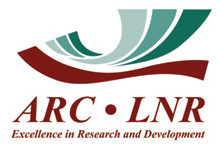It is a well-known fact that the presence of weeds in any crop has a negative impact on yield. The range of these crop losses depends on a variety of factors. One such factor is the weed species and their characteristics.
The presence of some weeds leads to higher yield losses compared to other weeds, for example ryegrass (Photo 1) versus Chenopodium (Photo 2). The negative impact of individual weed species in cereals is determined by the combination of its features: period of germination, growth rate, size of the overhead mass, height and branching of stems, shape, size and position of leaves, levels of photosynthetic activity, ecological plasticity, coefficient of reproduction and others (Haigh, 2000).


Worldwide, several studies have been conducted on the impact that weeds have on crop production. In India, it was found that weeds caused significant yield losses in various crops and the annual economic loss was found to be substantial (Joshi, 2002). Chaudhary et al. (2008) reported that one kilogram of barley yield was lost with the presence of each kilogram of weed green biomass present. In an article published by Mahajan (2020), yield loss due to weed interference in eight barley genotypes ranged from 43% to 78%. The huge losses in barley yield can be attributed to the competitiveness of weeds with barley.

Research
Very few herbicides are registered for weed control in barley, leading to the repeated application of herbicides with the same mode of action. This is, however, one of the main causes of the development of herbicide-resistant weeds. Since the prevalence of herbicideresistant weeds in barley remains unclear, the aim of this project was to determine the occurrence of ALS- and ACCase-inhibitor target-site herbicide resistance in barley over a four-year period.
Throughout the four-year time period of this project, weed samples were sent in by producers and/or collected by researchers during surveys and seedlings were germinated from received seeds (Photo 3 on page 56). DNA from these samples were then tested for target-site herbicide resistance to ACCase- and ALS-inhibitor herbicides. These herbicides are predominantly used for post-emergence weed control in barley.
Results
From 2018 to October 2021, a total of 102 ryegrass samples from barley fields, distributed throughout the Western Cape and summer rainfall irrigation areas, were screened for target-site resistance. Some of the samples were screened for ALS resistance (Group B herbicides), but most of the samples were screened for ACCase resistance (Group A herbicides). Results are indicated in Graph 1 and Graph 2.


During the 2018/2019 season, four out of 29 samples (14%) tested positive for target-site resistance to ACCase-inhibitor herbicides.
During the 2019/2020 season, seven out of twelve samples (58%) tested positive for target-site resistance to ACCase-inhibitor herbicides, while in the 2020/2021 season, 20 out of 49 samples (41%) tested positive for target-site resistance to these herbicides. To date in 2021/2022, nine out of twelve samples (75%) tested positive for target-site resistance to herbicides from this group (Graph 1).
Target-site resistance to the marker that was tested for ACCase target-site resistance, confers resistance to many aryloxyphenoxy-propionates (APP), all cyclohexanediones (CHD), including clethodim and phenylpyrazolines (PPZ). The following ACCase herbicides may show target-site resistance: clethodim, clodinafop, diclofop, fluazifop, haloxyfop, butroxydim, sethoxydim, tralkoxydim and pinoxaden.
During the 2021/2022 season, ten out of twelve samples (83%) tested positive for target-site resistance to herbicides from the ALS-inhibitor group (Graph 2). Target-site resistance to the marker that was tested for ALS target-site resistance confers resistance to sulfonylureas (SU), imidazolinones (IMI) and triazolopyrimidines (TP).
Heterozygous resistance means that there is a presence of target-site resistance in the tested sample, but that some degree of control can still be obtained with herbicides from the tested group. According to the results, more sensitive populations were recorded from 2018 to 2020 than heterozygous-resistant populations. However, in the 2021/2022 season so far, more resistant than sensitive populations have been identified. Samples are still received and these graphs may change slightly. It is important to note that other mechanisms of resistance may be present in the sensitive populations. It is also important to note that the percentage of heterozygous-resistant populations increased over time when compared to the first season, 2018/2019 (Graph 1).
Summary
Target-site resistance may render some Group A (ACCase-inhibitor) and Group B (ALS-inhibitor) herbicides less useful in the spraying programmes used during barley cultivation throughout South Africa. In cases where resistance was confirmed, it is critical to adopt additional weed control methods. The recommendation is to make use of integrated weed management (IWM) as far as possible, to limit the development/spread of herbicide resistance. This is not only true for barley, but for all crops.
References
- Chaudhary, SU, Hussain, M, Ali, MA & Iqbal, J. 2008. Effect of weedcompetition period on yield and yield components of wheat. Indian Journal of Agriculture research. 46: 47 – 53.
- Haigh, T. 2000. Weed competition and control. Centre for Horticulture and Plant Sciences Technology and the Environment, University of Western Sydney.
- Joshi, N. 2002. Manual of weed control. Research publication. 7615-B, East Azad Nagar, Delhi-110 051.
- Mahajan, G, Hickey, L & Chauhan, BS. 2020. Response of barley genotypes to weed interference in Australia. Agronomy 10(1).
For further information, please contact Hestia Nienaber at 058 307 3420 or deweth@arc.agric.za.
This research is made possible through financial assistance by AB InBev.



























